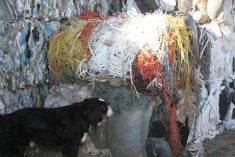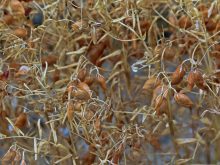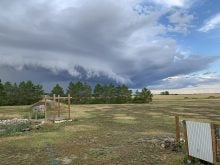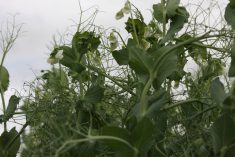The interactions of soil microorganisms can be likened to a complex nitrogen fertilizer factory and crop protection lab working around the clock, seven days a week, says Jill Clapperton, a rhizosphere ecologist.
From bacteria, fungi, mycorrhizae, protozoa and on up to dung beetles and more complex organisms, there is a community in the soil.
Encouraging biodiversity means that even if one part is knocked out for some reason, another part can quickly fill the breach.
“We know quite a bit about the chemical and the physical properties of soil, and we’re pretty good at measuring both of those,” said Clapperton, who worked for 16 years at Agriculture Canada’s Lethbridge research centre.
Read Also

Alberta looks for agricultural plastic management input
Alberta provincial government giving agriculture industry a say through survey in shaping future plastics management
Researchers studying low-input and organic agriculture are largely on the cutting edge of study in this field. They are trying to better understand how biological systems function and how they relate to food production.
Clapperton, who in 2006 moved to a ranch in Montana’s Bitterroot Valley, works part time for Earthspirit Land Resource Consulting.
Speaking at the two-day Holistic Management International seminar in Brandon last week, Clapperton discussed how soil flora act as the link between the chemical and physical properties of soil, and their role in nutrition and soil fertility.
Gaining a better understanding of soil is fundamental to the philosophy of holistic management, which asserts that everything is interconnected.
“Nutrient cycles are mediated by microorganisms. Your fertilizer dealer doesn’t tell you that,” Clapperton joked.
That’s why production techniques such as managed grazing that preserve and enhance biodiversity also build flexibility, resilience and resistance in natural systems.
Clapperton described the symbiotic relationship of mycorrhizal fungi with plants, which via thread-like hyphae distribute plant secretions among the soil microflora and protect plants from diseases and pests.
“We know that mycorrhizae co-evolved with plants on land because we find them in the fossil record. We also know that all the land races of plants were mycorrhizal. But very few of them are now, mostly because we’ve bred that out of them,” she said.
“That’s not a very good thing, because mycorrhizae are very important for the uptake of phosphorus, zinc and mineral nutrients. Mycorrhizae cannot grow without a host. If you can’t grow without a host, you’re going to protect that host with all that you’ve got.”
A connection to human health from this severed link can be found in the fact that most children in North America are deficient in zinc, a mineral nutrient that is essential for cognitive function.
Other related problems in agriculture, such as the immobility of nitrogen in soil organic matter, can be traced to the dependence on artificially produced nitrogen fertilizer in modern cropping systems, she said.
Protozoa can increase nitrogen mineralization by 45 percent. However, these single-celled organisms, visible only under a microscope, require water films and saturated pores on soil particles to survive. They thrive by consuming bacteria, which are a step below them in the food chain.
“Let’s think about soil structure. The better it is, the more water can infiltrate. With more surface area for water-filled pores, that means they have more area to move around and graze to control the bacterial populations,” she said.
“It’s better for the plant, but it also means that they are eating up all the proteins, amino acids and nucleic acids that have been accumulating. They are then pooping out all that good stuff into the rhizosphere of the plant. So we get a cascading spiral of everything becoming really biological. Free nitrogen. That’s what it’s all about,” said Clapperton.














